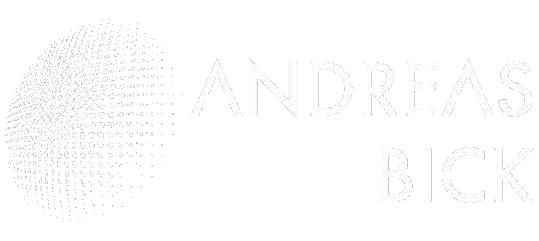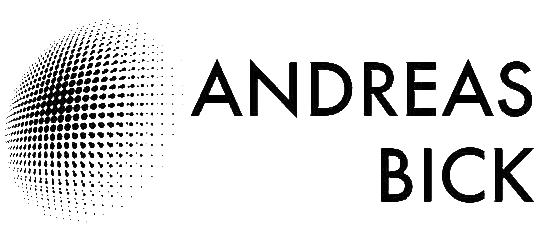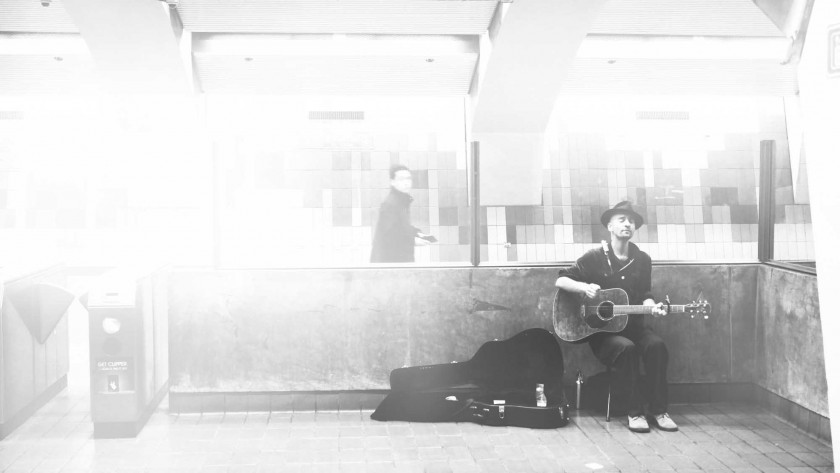Feature für WDR3 und 1LIVE
Ursendung: 27. 10. 2014, spätere Ausstrahlungen auf BR2, SWR2, Deutschlandradio Kultur und NDR Info
Begleitet wurde das Feature von einer Multimedia-Reportage im Pageflow-Format mit ergänzenden Inhalten (inzwischen offline). Noch mehr Material wie zusätzliche Video-Interviews und Texte finden sich auf folgender Seite:
Mitwirkende: Duke The Bossman, Candace Roberts, Noah Lusion, Lewis Ames, Fred Turner, John Vanderslice u. a.
Schauspieler: Robert Gwisdek, Frederik Hahn, Inka Löwendorf, Constantin von Jascheroff, Benjamin Kramme, Axel Wandtke und Robert Frank
Regie, Produktion und Sound: Andreas Bick
Im Juli und August 2014 habe ich die Bay Area um San Francisco in den USA besucht und mit vielen Musikern gesprochen, die auf verschiedene Weise vom Boom um das Silicon Valley betroffen sind. In der Online-Reportage und dem Radio-Feature geht es nicht nur um Musik, sondern auch um sehr aktuelle politische Themen wie die Sharing Economy, Disruption, Google Busse, Burning Man und die wachsende Ungleichheit in der amerikanischen Gesellschaft.
In keiner anderen Gegend der USA klaffen Reichtum und Armut so weit auseinander wie in der Bay Area um San Francisco. Im Silicon Valley versammeln sich einige der reichsten Unternehmen der Welt, deren Mitarbeiter die Künstler in San Francisco aus ihren Wohnungen verdrängen. Zwei der weltweit begehrtesten Universitäten haben in der Bay Area ihre Heimat, aber in vielen Vierteln verwahrlosen die öffentlichen Schulen und es herrscht Gewalt.
San Francisco war in den 60er Jahren das Herz der Hippie-Bewegung und der amerikanischen Gegenkultur. Im benachbarten Silicon Valley wurden zur gleichen Zeit die Grundlagen für die digitale Revolution gelegt. 50 Jahre später ist die Bay Area rund um San Francisco eine der reichsten Regionen der Welt und das Mekka der Informationstechnologie. Doch die Künstler, die einst die kreative Atmosphäre für den Aufstieg der Internet-Unternehmen schufen, werden heute von jungen Programmierern aus ihren Wohnungen verdrängt. Die Sharing Economy, selbst eine Erfindung aus der Bay Area, ermöglicht es einigen Künstlern, unter diesen erschwerten Bedingungen zu überleben.
Da die Mieten in San Francisco inzwischen neben New York zu den teuersten im ganzen Land zählen, ziehen viele Künstler und IT-Arbeiter auf die andere Seite der Bay nach Oakland. Wo einst Gangs und schwarze Rapper ihr Revier markierten, züchten heute die Neuzugezogenen im Hinterhof Hühner oder brauen ihr eigenes Bier. Nur wenige Straßenzüge weiter dominieren schlecht ausgestattete öffentliche Schulen, Fast-Food-Ketten, Liquor-Shops und Drogen die Szene. Die Folge: Viele Teenager-Schwangerschaften, Drogen und Schießereien. Vom viel beschworenen „Trickle-Down-Effect“ der Wirtschaftsblase um das Silicon Valley ist hier in unmittelbarer Nähe nichts zu spüren.
Alle Links:
Webpage (die zentrale Seite für das Projekt)
Vimeo Channel (alle Musik- und Interview-Videos)
Bay Area Disrupted
Radio Feature commissioned by WDR3 and 1LIVE
First Broadcast October 27th, 2014, later on BR2, SWR2, Deutschlandradio Kultur and NDR Info
There is also a Multimedia-Reportage that works with the same footage (now offline). Additional material like video-interviews and more text can be found on the following page:
Featuring: Duke The Bossman, Candace Roberts, Noah Lusion, Lewis Ames, Fred Turner, John Vanderslice a. o.
Actors: Robert Gwisdek, Frederik Hahn, Inka Löwendorf, Constantin von Jascheroff, Benjamin Kramme, Axel Wandtke and Robert Frank
Director, Production, Sound: Andreas Bick
In 2014 I visited San Francisco Bay Area to produce a radio feature plus web reportage for German broadcaster WDR. My question was: how does the Silicon Valley boom affect artists in the Bay Area? The question is not only about gentrification, Google Bus protests and soaring rent prices in San Francisco. The beatniks of the 50s and the counter-culture of the 60s played a crucial part in shaping San Francisco’s unique atmosphere of liberal openness, creativity and individualism. Many of the early hackers and inventors of Silicon Valley were inspired by the drug and music culture of the hippies. The overlap of counter-culture and computer engineering led to new forms of corporate organization, which are typical for todays Silicon Valley startups as well as billion-dollar companies like Apple or Google. Every year thousands of Silicon Valley employees and their CEOs worship to the Black Rock Desert in Nevada for Burning Man, along with thousands of artists from the Bay Area to collaborate and celebrate individualism and creativity. The technopaganism of Burning Man, originally started on a beach in San Francisco and later moved to the Nevada desert, is a modern resurrection of the LSD-fueled concerts and parties of 60s, where the hippies already tried to dissolve borders between musicians and audiences in a Dionysian revel.
But the overlap between music scene and technorati wasn’t always peaceful. The Bay Area was also the location of a Pyrrhic victory that later turned out to be the beginning of a long downfall for the music industry when in 2000 Lars Ulrich, drummer of the local band Metallica, pulled up in a SUV in front of Napster’s office in San Mateo to deliver 13 boxes with names of countless fans who downloaded Metallica songs for free. After 2 years of legal battles Napster closed shop, but the music industry was bound to never really recover from illegal filesharing as well as a disastrous loss of reputation. In fact, another Silicon Valley firm by the name of Apple was at the forefront to reinvent the distribution and consumption of music with its iPod and iTunes Store. Still, for musicians beyond super star popularity it was ever getting harder to survive, especially after Silicon Valley tech companies started to offer their wealthy employees the lush life in culture-rich San Francisco enabled by bus shuttles commuting between the hip districts of the city and the tedious headquarters down the bay. Other tech firms like Twitter took root directly in San Francisco and transformed their neighborhoods. Median rent climbed up to New Yorkian levels and drove an army of artists out of San Francisco and over the bay to Oakland.
Oakland today is where most of the creative edge of the Bay Area resides. But Oakland is also ridden by a lot of social tension. The campus of University of California, Berkeley, north of Oakland is only a few miles away from the so-called “killing fields” of East Oakland, but both areas are worlds apart in every other aspect. The Bay Area is home of two of the world’s three most famous universities – Stanford and Berkeley – but public schools are in dire state. Once California ranked second among all US public schools, but after a change of the taxation system in California in 1978, spending in public education dropped. Today public schools in California rank 48th among all US states in relation to student achievements. And Oakland is at the core of the problem. The sharing economy is ment to balance some of the existing inequalities. But Airbnb or Uber are only options for the ones who already have a flat or who already have a car. Nowhere else in the US social stratification is as extreme as in the Bay Area.
There are no easy answers. I spoke to a handful of artists and writers. About their lifes, their art and their perspective of the Bay. At the center of the radio documentary are singer Candace Roberts, rap and spoken poetry artist Duke the Bossman of Color Me Black, electronic producer Nowa Lusion and the band Wizard Fist. I also spoke to Fred Turner of Stanford University, music writer Joel Selvin, producer Count, musician and studio owner John Vanderslice, Hip Hop historian Davey D and latin rap artist El Kool Kyle. All together they paint a diverse picture of the creative and relentless spirit of the San Francisco Bay Area.
The collected links:
Webpage (the central page for the project)
Vimeo Channel (all interviews and music videos)


